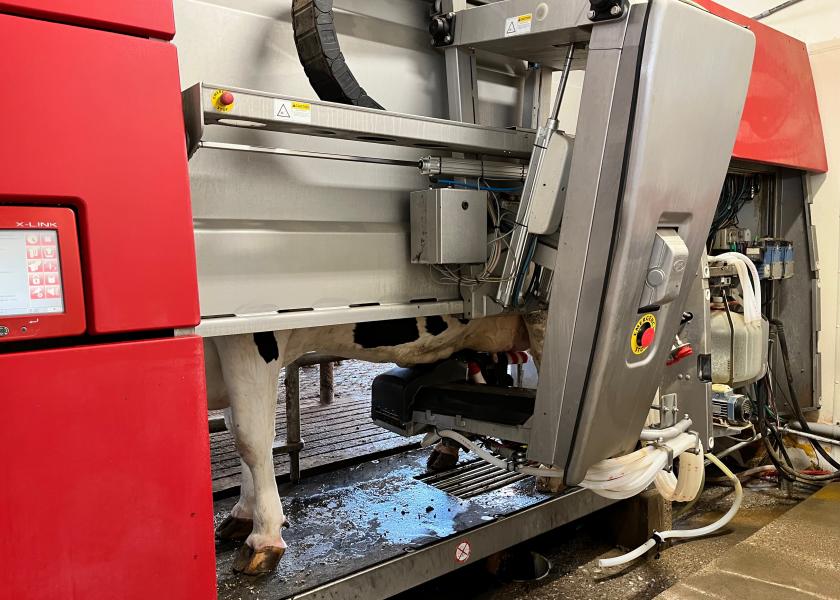Breeding the Right Cow for Robots

Today’s dairy farmers have an appetite for new technology. While automatic milking systems (AMS) are certainly nothing new, upgrades are continually being made to help farmers maximize efficiency. Labor shortages and higher wage rates also make robots a tempting investment, despite the high upfront cost and need to build or retrofit barns.
But one thing farmers often forget about when looking at making the switch to robots is if their herd’s genetics will work in this new system. According to Victor Malacco, extension agent for Michigan State University, and Camila Lage, Cornell Cooperative Extension, there are several conformational and behavioral characteristics a robot herd should possess. These characteristics include:
- Good udder conformation. This makes it easy for the robot to attach the milking unit and clean the teats.
- Good feet and legs. The cows need to be able to get to the robot voluntarily without lameness issues.
- Good behavior. Cows in AMS herds need to quickly adapt to the robot, visit the robot often, push other cows out of the robot area, and not need to be fetched.
- Good milk quality. Cows should have a high milk flow rate, low times spent in the robot, and not be susceptible to mastitis.
While certain traits like udder conformation and mobility are a bit easier to select for, it can be more difficult to make breeding decisions based on behavioral characteristics. To combat this, it is important to keep management practices in check.
Both Malacco and Lage recommend conditioning cows to the robots, especially before or early on in their first lactation.
“[A cow’s] success in an AMS herd is dependent on how quickly she adjusts to the AMS after calving,” the duo state. “Fetching cows is time-consuming and largely impacts the farms’ production and labor efficiency. Some studies suggest that early life management can affect the behavior and adaptability of cows to novel environments, animals, people, and management procedures on farms.”
While a solid genetic plan is needed on any dairy operation, it is especially important for AMS herds. With good herd management, herd training and the selection of ‘robot ready’ characteristics, farmers will be able to capitalize on their AMS investment and optimize the performance and profitability of their herd.
For more on robots, read:
- This Illinois Family Chose the Robot Route
- Feeding Strategies In Robot Dairies
- Before Making the Big Financial Decision to Put in Robots, Read This







